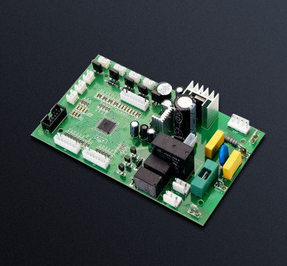In the production process of PCB circuit boards, most manufacturers still use wet film imaging technology due to cost factors, which will inevitably cause problems such as "seepage, bright edges (thin tin)" and other undesirable problems when the graphics are electroplated with pure tin. Therefore, I will discuss with you the solutions to common problems of pure tin plating that I have summarized over the years. Among them, the electroplating process of the circuit board can be roughly classified: acid bright copper electroplating, nickel/gold electroplating, and tin electroplating. The article introduces the technology and process flow of the electroplating process, and the specific operation methods in the PCB circuit board processing process. Shenzhen Honglijie provides professional PCBA, PCB copy board, PCB design, SMT chip processing, OEM and OEM materials.
Process flow:
Acid pickling-full board copper electroplating-graphic transfer-acid degreasing-secondary countercurrent rinsing-micro-etching-secondary countercurrent rinsing-acid pickling-tinning-secondary countercurrent rinsing-countercurrent rinsing-acid pickling-graphic copper plating-two Grade countercurrent rinsing-nickel plating-secondary water washing-citric acid immersion-gold plating-recycling-2-3 pure water washing-drying
2. Analysis of the cause of "seepage" of wet film board (quality problem of non-pure tin solution)
1. The copper surface brushed before the silk screen must be clean to ensure good adhesion between the copper surface and the wet oil film.
2. When the wet film exposure energy is too low, the wet film will be incompletely cured, and the resistance to electroplating pure tin is poor.
3. The wet film pre-bake parameters are unreasonable, and the local temperature of the oven varies greatly. Since the thermal curing process of photosensitive materials is more sensitive to temperature, when the temperature is low, the thermal curing will be incomplete, thereby reducing the ability of the wet film to resist electroplating pure tin.

4. No post-treatment/curing treatment reduces the resistance to electroplating pure tin.
5. The board from electroplating pure tin must be thoroughly cleaned with water. At the same time, each board must be inserted into a rack or dry board, and it is not allowed to stack boards.
6. Wet film quality problems.
7. Production and storage environment and time influence. Poor storage environment or long storage time will swell the wet film and reduce its resistance to electroplating pure tin.
8. The wet film is attacked and dissolved by pure tin light agent and other organic pollution in the tin tank. When the anode area of the tin plating tank is insufficient, it will inevitably lead to a decrease in current efficiency and oxygen evolution during the electroplating process (electroplating principle: anode oxygen evolution, cathode Hydrogen evolution). If the current density is too high and the sulfuric acid content is too high, hydrogen will evolve from the cathode, which will attack the wet film and cause tin permeation (so-called "permeation").
9. High concentration of the stripping solution (sodium hydroxide solution), high temperature or long immersion time will produce tin flow or dissolution (so-called "dialysis").
10. The current density of pure tin plating is too large. Generally, the best current density of wet film quality is suitable for 1.0~2.0A/dm2. Beyond this current density range, some wet film quality is prone to "seepage".
3. The cause of "seepage" caused by the potion problem and its improvement countermeasures
1. Reason:
The problem of the potion causes the "dipping" to occur mainly depends on the pure tin brightener formulation. The light agent has a strong penetrating ability and the attack on the wet film during the electroplating process produces "dialysis". That is to say, when the pure tin brightener is added too much or the current is slightly too large, "dipping" will occur. Under normal current operation, the "dipping" produced is related to the uncontrolled operating conditions of the solution, such as too much pure tin brightener, The current is too large, the stannous sulfate or sulfuric acid content is too high, etc., all of which will accelerate the attack on the wet film.
2. PCB design, improvement measures:
The performance of most pure tin brighteners determines that they are more aggressive to wet film under the action of electric current. In order to avoid reducing the "seepage" of wet film plated pure tin plate, it is recommended to produce wet film plated pure tin plate. Three points:
1. . When adding pure tin brightener, it must be monitored in a small amount and multiple times. The content of pure tin brightener in the plating solution is usually controlled at the lower limit;
2. . The current density is controlled within the allowable range;
3. . The control of the composition of the syrup, such as stannous sulfate and sulfuric acid content at the lower limit, will also be beneficial to improving "dialysis".